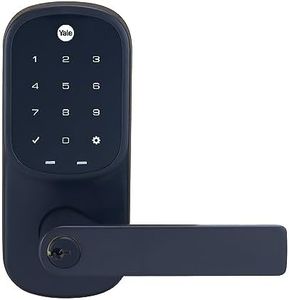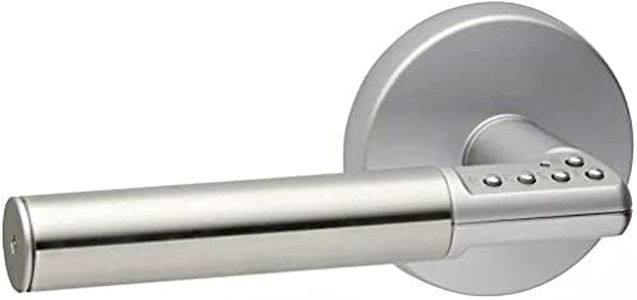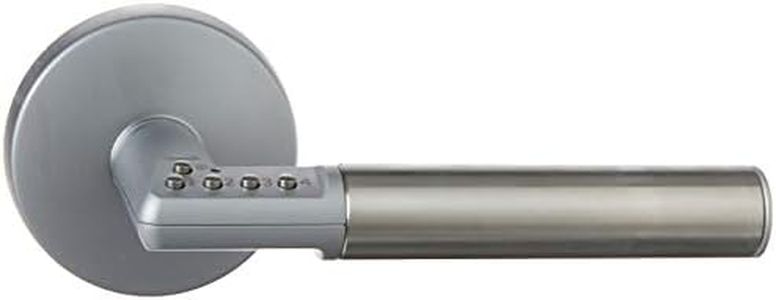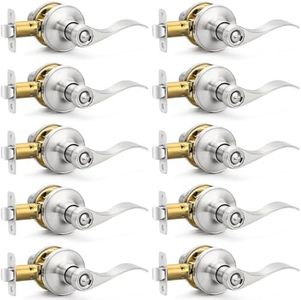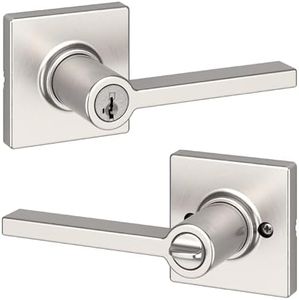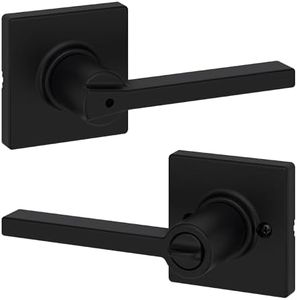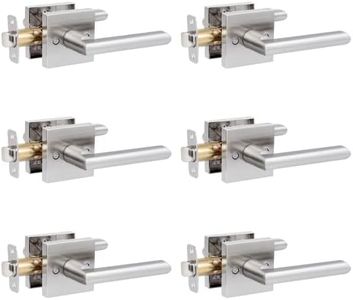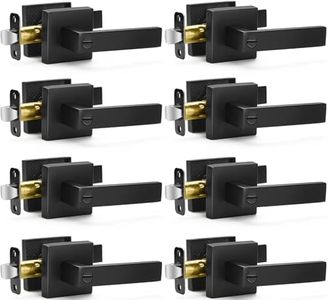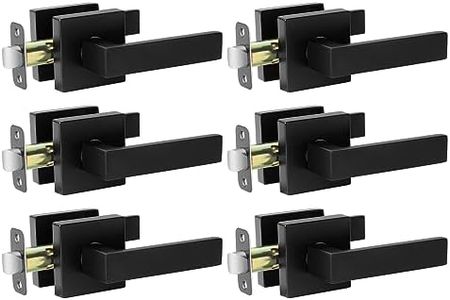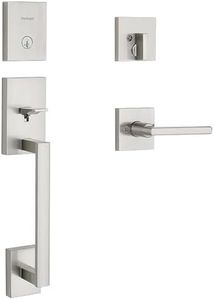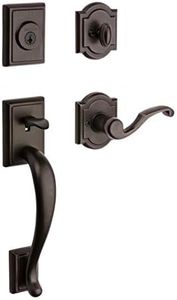We Use CookiesWe use cookies to enhance the security, performance,
functionality and for analytical and promotional activities. By continuing to browse this site you
are agreeing to our privacy policy
10 Best Door Levers
From leading brands and best sellers available on the web.Buying Guide for the Best Door Levers
Choosing the right door lever is important because it not only affects the way your doors function, but also adds to your home's style and security. When shopping for door levers, you'll want to focus on a few important specifications to make sure the lever you pick fits your needs, blends with your interior design, and works well with your door type. You'll need to consider what the lever will be used for (like a closet, bedroom, or main entrance), how easy it is to use, and if it matches your preferences for style and finish.FunctionThis specification refers to the purpose the door lever will serve. There are several common functions: privacy levers (for bathrooms and bedrooms) that can be locked from one side, passage levers (for closets or hallways) that have no locking feature, keyed entry levers (for exterior doors), and dummy levers (which don't turn and work as pulls). When choosing, it's important to consider where the lever will be installed and whether you need locks, as this guides you to the appropriate function.
BacksetBackset measures the distance from the edge of the door to the center of the handle hole. Common sizes are typically about 2-3/8 inches or 2-3/4 inches. This is important because the lever must fit your existing door preparation. To pick the right backset, measure your door and match it to the lever’s specifications. Most levers are adjustable, but always check this detail.
HandingHanding refers to whether the lever is meant for a left-handed, right-handed, or either direction (reversible) door. This matters because levers have a specific orientation and may not fit comfortably if installed incorrectly. To choose, stand outside the room and see where the hinges are; if they're on the left, it’s a left-handed door, and the opposite for right. Some levers are universal and work both ways, which can be easier for most home users.
Material and FinishThe material and finish determine both the look and durability of your door lever. Materials like stainless steel, brass, or zinc alloy offer varying degrees of strength and resistance to rust or tarnish. The finish—such as matte black, chrome, or bronze—affects how the lever matches your home’s style and how much maintenance it may require. To pick the right one, consider both the room’s décor and how much daily use the lever will get, especially for exterior doors exposed to the elements.
Accessibility and Ease of UseThis spec looks at how easy the lever is to operate, which is important for people with limited hand strength, children, or the elderly. Some levers are designed with larger or ergonomic handles that are easier to grip and turn. If accessibility or comfort is a priority, seek out levers labeled as ADA compliant or those specifically marketed as easy-to-operate, and test if possible to make sure they meet your needs.
Latch Type and SecurityThis refers to the type of locking mechanism the lever uses. Privacy levers use a simple push-button or turn locking mechanism, while keyed entry levers use keys and often have higher security features. For interior doors where security is not as critical, a basic latch is usually fine, but for exterior doors, look for levers with solid latches and good security ratings. Match the latch type to the level of security required for that doorway.
